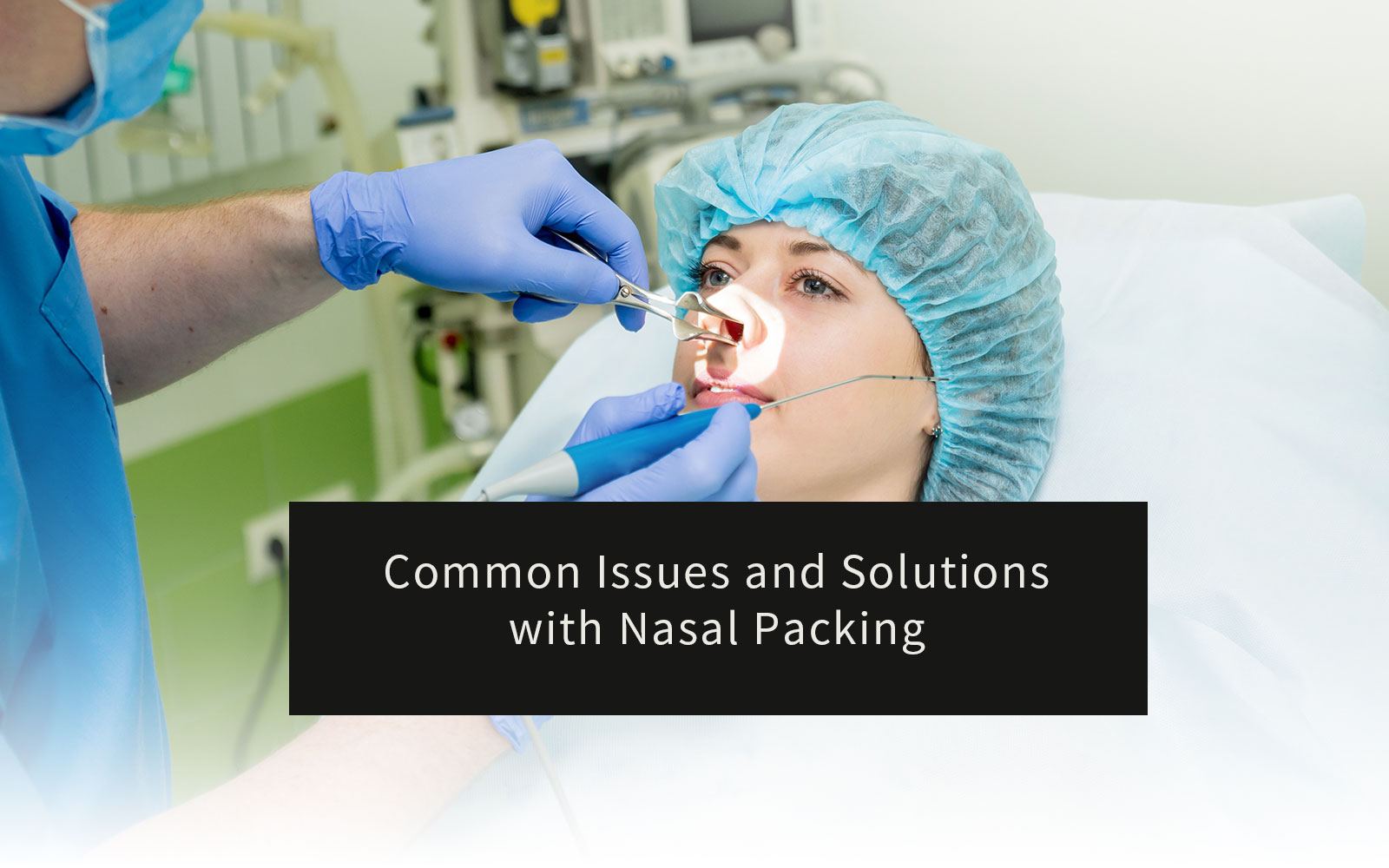Table of Contents
Common Issues and Solutions with Nasal Packing
- Difficulty in Implantation and Expansion
o Problem: Nasal packing can be challenging to position, and may not expand effectively when dry.
o Solution: NasoAid can be compressed or trimmed to fit the nasal cavity. For easier implantation, it can be pre-soaked in 3-5 mL of sterile water and will fully moisten within 30 seconds. If needed, an additional 10 cc of saline can be injected post-implantation to facilitate expansion. - Inadequate Absorption and Support
o Problem: Some dressings fail to provide adequate fluid absorption or structural support, leading to prolonged bleeding or discomfort.
o Solution: NasoAid can absorb up to 35 times its weight in fluids, ensuring efficient hemostasis and a clean environment. In cases requiring more support, multiple pieces (up to 5 pieces of NSA-402015) can be used in a single nasal cavity for enhanced hemostasis and structural integrity. - Pain During Removal
o Problem: Removing traditional nasal packing can cause pain, especially if the dressing has dried or adhered to tissues.
o Solution: NasoAid begins to self-degrade within 24 hours, reducing the need for manual removal. Before removal, the remaining material can be moistened with saline and suctioned out, minimizing discomfort.
Managing Adverse Reactions to Collagen Nasal Packing in Nasal Surgery
Adverse reactions to collagen nasal packing are rare, but in some cases, patients may experience discomfort, swelling, or allergic reactions.
- Discomfort or Irritation: Ensure proper hydration of the dressing during insertion and follow-up. NasoAid maintains moisture, reducing irritation and dryness.
- Swelling: Pre-soak the dressing and monitor the patient closely to prevent rapid expansion. Use the recommended number of pieces to avoid excessive blockage or pressure.
- Allergic Reactions: Though uncommon with NasoAid’s biocompatible materials, immediate removal and medical attention are necessary if an allergic reaction occurs.
How NasoAid Collagen Nasal Packing Enhances Clinical Practice
- Customizability: NasoAid can be trimmed, compressed, or pre-soaked to fit various nasal cavity sizes, offering flexibility in surgical applications.
- Superior Hemostasis and Absorption: Its ability to absorb 35 times its weight ensures superior fluid management, maintaining a clean surgical field and promoting faster healing.
- Biodegradable Design: The biodegradable nature of NasoAid means it starts degrading after 24 hours and fully disintegrates within 7-14 days, reducing the need for painful removal.
- Enhanced Comfort: NasoAid reduces infection risk with its antimicrobial properties, while also minimizing patient discomfort during removal due to its self-degrading material.
Common Clinical Q&A for NasoAid Collagen Nasal Packing
- How many NasoAid pieces can be implanted at once?
o Up to 5 pieces of NSA-402015 can be used in a single nasal cavity, depending on wound size. - Can NasoAid be pre-soaked before implantation?
o Yes, NasoAid can fully moisten within 30 seconds, so it can be implanted in a dry state. If concerned about difficulty in operation when dry, it is recommended to pre-soak each NSA with 3-5 mL of sterile water before securing with ENT forceps and implanting. - Is additional liquid injection needed to help NasoAid expand after implantation?
o Not necessarily. It depends on the bleeding at the wound site and the skill of the physician. If exudate and blood can adequately expand NasoAid, there is no need for additional injection to facilitate expansion. - Does the rapid degradation of NasoAid affect its abilities of support and hemostasis in the nasal cavity?
o If the patient’s wound requires a higher level of support and hemostatic effect, it is recommended to implant multiple NasoAid pieces (<5 pieces of NSA-402015/nasal cavity), which will not affect the removal time. - Will there be pain when removing NasoAid?
o After 24 hours of implantation, NasoAid will begin to self-degrade. Before removal, residual material is moistened with saline solution and then suctioned out. There will be no significant pain sensation during this process
How NasoAid Collagen Nasal Packing Improves Surgical Outcomes
NasoAid stands apart from conventional nasal dressings due to its 70% collagen composition, which not only provides superior hemostasis but also promotes wound healing. Collagen acts as a scaffold, encouraging tissue regeneration and reducing recovery time. Additionally, the 30% carboxymethyl cellulose (CMC) in NasoAid provides lubrication, minimizing tissue friction and discomfort. The CMC also offers excellent moisture retention, keeping the wound site moist and preventing adhesions. This dual-action design ensures more effective hemostasis and healing, while its biodegradable nature enhances patient comfort by eliminating the need for removal, saving the patient from a second procedure.

